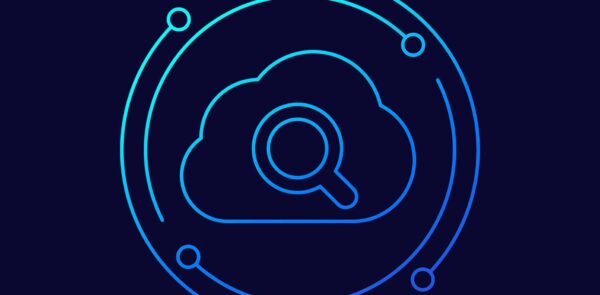
At Emulent, we understand that keeping our customers satisfied and engaged is the lifeblood of our SaaS digital marketing business. Churn analysis isn’t just a buzzword for us; it’s crucial to maintaining strong, lasting relationships with our clients. By diving deep into customer data and understanding the reasons behind churn, you can continuously improve your services and ensure that our clients see the value in sticking with you for the long haul.
What is a Churn Analysis
Churn analysis examines and understands why customers stop using a product or service, particularly in subscription-based business models like SaaS (Software as a Service). The goal is to identify the reasons behind customer attrition (churn) and implement strategies to reduce it. Here’s a breakdown of the key components and steps involved in a churn analysis:
1. Data Collection
Data collection is the first and most critical step in conducting a comprehensive churn analysis for SaaS companies. This process involves gathering various customer data from various sources to understand their behavior, interactions, and experiences with the service. Key data points to collect include:
- Customer information includes subscription start dates, plan types, and renewal dates. This helps in understanding each customer’s lifecycle and tenure. Usage metrics are also essential, capturing details like login frequency, features used, and session durations to identify engagement levels and usage patterns.
- Customer support data is another crucial element, encompassing the number of support tickets raised, response times, resolution rates, and customer satisfaction scores from these interactions. This data provides insights into the effectiveness of customer support and potential pain points that could lead to churn.
- Transaction data, including payment history, subscription upgrades or downgrades, and cancellations, offers a financial perspective on customer behavior. Additionally, collecting customer feedback through surveys, Net Promoter Scores (NPS), and direct communications helps gauge customer sentiment and satisfaction.
SaaS companies can create a detailed and holistic view of their customers by systematically collecting and integrating these diverse data points. This comprehensive dataset is the foundation for identifying churn indicators, understanding the reasons behind customer attrition, and developing strategies to enhance retention and loyalty.
Identifying churn indicators is crucial in understanding why customers leave a SaaS service. Churn indicators are patterns or behaviors that signal a customer might be at risk of ending their subscription. These indicators can be derived from various data points collected during the data collection phase.
- Usage metrics often provide the first clues. A noticeable decline in login frequency, reduced engagement with key features, or shorter session durations can indicate that a customer is not finding value in the service. Customers who stop using certain features previously critical to their workflow might be at higher risk of churning.
- Customer support interactions also serve as significant indicators. An increase in support tickets, particularly those that remain unresolved for long periods, can be a red flag. Customers facing ongoing issues without satisfactory resolutions are more likely to become dissatisfied and leave.
- Financial data offers another perspective. Patterns such as late payments, downgraded subscription plans, or frequent payment issues can suggest a customer is reconsidering their commitment. Additionally, analyzing feedback through NPS scores or direct comments can highlight dissatisfaction or areas where the service falls short.
3. Segment Your Customers
Segmenting customers is a vital step in understanding and addressing churn in a more targeted and effective manner. Customer segmentation involves dividing the customer base into groups based on shared characteristics or behaviors. This allows for more precise analysis and tailored strategies to reduce churn.
- One approach to segmentation is based on demographic factors such as age, location, industry, or company size. These segments can reveal how different customer types use the service and where specific churn risks might lie. For instance, small businesses might face challenges different from those of large enterprises, requiring different support and engagement strategies.
- Behavioral segmentation focuses on how customers interact with the product. Grouping customers by usage patterns, feature adoption, and engagement levels helps identify which segments are more likely to churn. For example, customers rarely use advanced features, but they might benefit from targeted training or resources to enhance their usage.
- Another effective method is value-based segmentation, which categorizes customers based on their revenue contribution or lifetime value. High-value customers at risk of churning may warrant more personalized attention and proactive retention efforts than lower-value segments.
- Customer satisfaction and feedback can also serve as a basis for segmentation. Grouping customers by NPS scores or satisfaction levels can help identify advocates versus detractors, allowing for targeted measures to improve satisfaction and loyalty among at-risk groups.
4. Customer Feedback Analysis
Customer feedback analysis is a cornerstone of effective churn analysis for SaaS companies. Collecting feedback from various channels, such as surveys, Net Promoter Scores (NPS), support tickets, and direct interactions, provides a comprehensive view of customers’ experiences.
Once the feedback is collected, it is categorized into
- product usability\customer service
- feature requests
- overall satisfaction.
Advanced sentiment analysis tools discern the emotional tone behind the feedback, helping to identify areas of concern and aspects that delight customers.
Feedback is also segmented based on customer demographics and usage patterns. This segmentation allows tailored improvements specific to different customer groups, enhancing their overall experience.
Timing is crucial in feedback analysis. Feedback provided shortly before a customer churns often highlights critical issues that need urgent attention. Addressing these pain points promptly can prevent other customers from having similar negative experiences. Conversely, positive feedback from long-term customers sheds light on what is being done right, helping reinforce these strengths.
5. Implement Interventions
Implementing interventions is crucial in reducing churn and enhancing SaaS companies’ customer retention. Once churn indicators are identified and customers are segmented, tailored strategies can be designed and executed to address different customer groups’ specific needs and pain points.
- Proactive communication is a fundamental intervention. Regular check-ins, personalized emails, and targeted outreach can keep customers engaged and address issues before they escalate. For instance, customers showing decreased usage might benefit from a call to understand their challenges and offer assistance or training.
- Enhancing customer support is another critical intervention. Ensuring support teams are well-equipped to resolve issues quickly and effectively can significantly improve customer satisfaction. Offering 24/7 support, live chat options, and a comprehensive knowledge base can make it easier for customers to get the help they need.
- Product improvements based on feedback are also essential. If multiple customers report similar issues or feature requests, prioritizing these changes can demonstrate that the company values and responds to customer input. This can foster loyalty and reduce the likelihood of churn.
- Incentive programs, such as loyalty rewards, discounts, or extended trial periods for new features, can encourage continued usage and strengthen customer relationships. For high-value customers, personalized offers and exclusive access to new features can make them feel valued and appreciated.
- Monitoring and adjusting interventions based on their effectiveness is crucial. Regularly analyzing the impact of different strategies allows for continuous improvement and adaptation to changing customer needs and behaviors.
By consistently performing churn analysis, you can safeguard your customer base and drive the evolution of your services. This commitment to understanding and mitigating churn enables you to provide better, more tailored solutions to your clients. Feel free to reach out to our SaaS agency for help.


